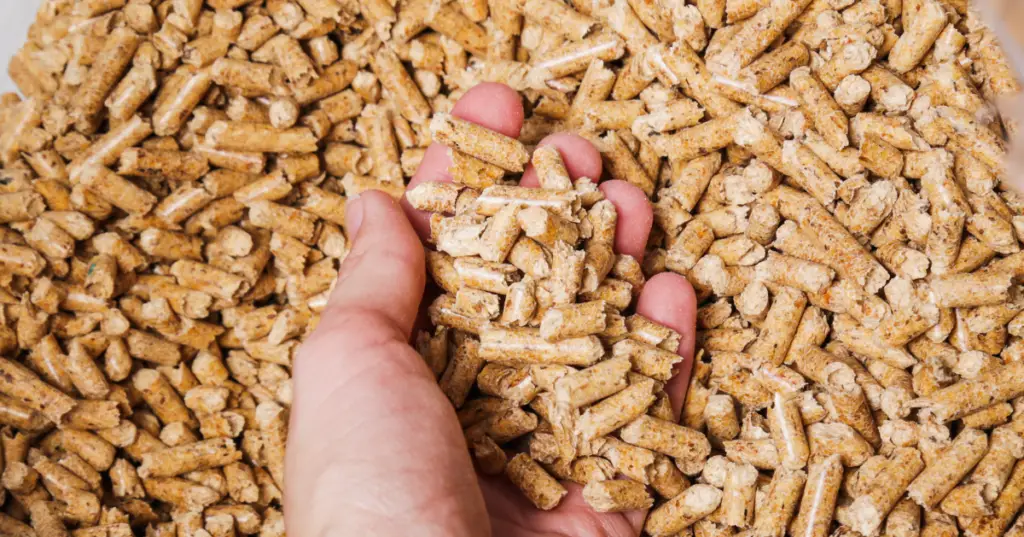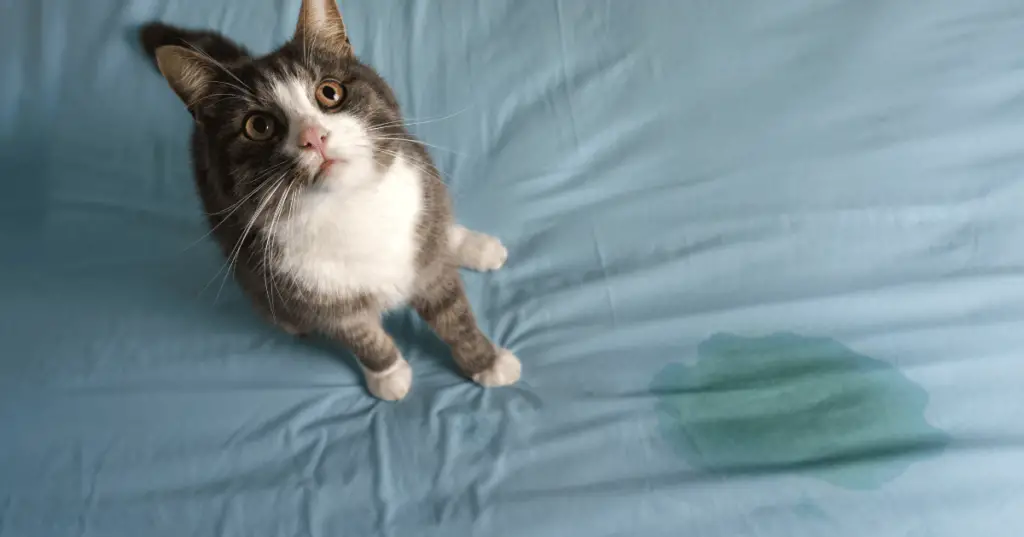Cats are like family and we care about their safety. Cat litter is something we need to choose carefully. Some people are switching to pine pellets, a natural option made from wood. But, we need to ask, “Are pine pellets safe for cats?”
Pine pellet cat litter is becoming popular because it’s eco-friendly and claims to control odours. But, before using it, we must check if it is. Are pine pellets really safe for cats?
In this article, we will explore pine pellets for cat litter. We want to know if they’re good or bad for cats. We will look at the facts, what experts say, and real experiences to help you decide if pine pellets are safe for your cat.
How Do Pine Pellets Work?
Pine pellets for cat litter are easy to understand. They are made from squished bits of pine wood. When your cat pees on them, the pellets soak up the pee and turn into sawdust. This sawdust helps with two things which are stopping bad smells and keeping things dry.
Pine has something called phenols, which are like natural smell fighters. When the pellets turn into sawdust they release these phenols which make the litter box not stink so much.
These pellets don’t stick together like clay litter. Instead, they break down into sawdust when wet, so it’s easier to scoop out the dirty stuff. Some people like this because you don’t need to change all the litter as often.
Pine pellets are also good for the environment because they come from pine trees and can break down naturally. But every cat is different, and some might not like the feel or smell of pine pellets.
Are Pine Pellets Really Safe for Cats?
Pine pellets really safe for cats but it depends on your cat’s feelings and needs. Here’s what to think about:
First, some cats might be allergic to pine or not like the feel of pine pellets. If your cat acts uncomfortable or gets skin problems after using pine pellets it might not be a good choice.
Second, pine pellets don’t clump like regular cat litter. If you like clumping litter for easy cleaning. Pine pellets might not be your best option.
Lastly, when pine pellets get wet they can turn into sawdust and make a little dust. They might also get carried outside the litter box by your cat’s paws. If you or your cat don’t like this, it could be a downside.
Pros and Cons of Pine Pellets
Here is a more detailed breakdown of the pros and cons of using pine pellets as cat litter
Pros of Pine Pallets
Here are the pros of pine pallets are given
Natural and Renewable
Pine pellets are crafted from squished pine wood bits. These pellets are a natural choice because they come from pine trees, which are a kind of tree. This makes them great for the environment because we can keep growing more pine trees, unlike some other litter that can’t be replaced as easily.
No Bad Smells
Pine has something in it called phenols. These phenols are like natural smell fighters. When your cat’s pee touches the pellets, they release these phenols, making the bad smells not so bad. It’s a natural way to keep the litter box smelling fresh.
Eco-Friendly Breakdown
Pine pellets are good for the Earth because they break down naturally. This means they don’t sit in landfills for a long time, unlike litters that don’t break down. So, they’re a better choice for our planet.
Easy to Scoop
Even though pine pellets don’t stick together like some litters, they still have a cool trick. When they get wet, they turn into sawdust. You can scoop this sawdust out with the yucky stuff, which makes cleaning up easier.
Low Dust
Pine pellets make a less dusty mess than regular wood cat litter. That’s good because dust can bother cats and their owners, especially if they have trouble breathing.
Cons of Pine Pellets
Here are the cons of pine pellets given
Texture Preference
Cats are a bit picky about what they like. Some cats might not enjoy the feeling of pine pellets under their paws. It’s different from what they’re used to like walking on a different kind of floor. So, your cat could be unsure about using the litter box with these pellets and that might make them not want to use it.
Tracking
When pine pellets get wet, they turn into tiny pieces like sawdust. These little bits can stick to your cat’s paws and get carried outside the litter box. So, your cat might leave a trail of these tiny pieces around the house, which means you’d have to clean up more often.
No Clumping
Unlike some litters that stick together when wet pine pellets don’t do that. They just turn into sawdust. This can make it a bit harder to scoop out the wet parts, so cleaning up after your cat might be a bit trickier.
Transition Period
Cats are creatures of habit, and they can be sensitive to changes in their environment. If you decide to switch to pine pellets from a different type of litter your cat might need some time to get used to it. They might be unsure about the new smell and texture. So, you’ll need to be patient and give your cat some time to adjust.
Less Absorbent
Pine pellets are good at soaking up moisture, but they might not be as good as some other litters, like the high-quality clay ones. This means that the litter might get wet more quickly, and you’d need to change it more often which could be a hassle for some cat owners.
Conclusion
Pine pellets for cat litter have their pros and cons. On the positive side, they are natural and good for the environment because they come from pine trees and break down over time. They’re also pretty good at keeping the litter box from smelling bad and producing less dust, which is better for cats and people with breathing problems.
However, some cats might not like the feel of pine pellets under their paws, and the litter can leave a trail of sawdust around the house. Pine pellets also don’t clump like some other litters, which might make cleaning up a bit more challenging. If you switch to pine pellets, your cat might need time to get used to them, and they might not soak up moisture as well as some other litters.




